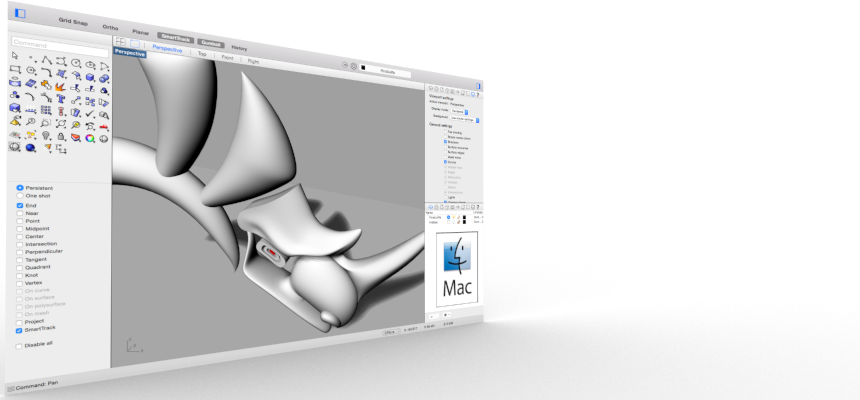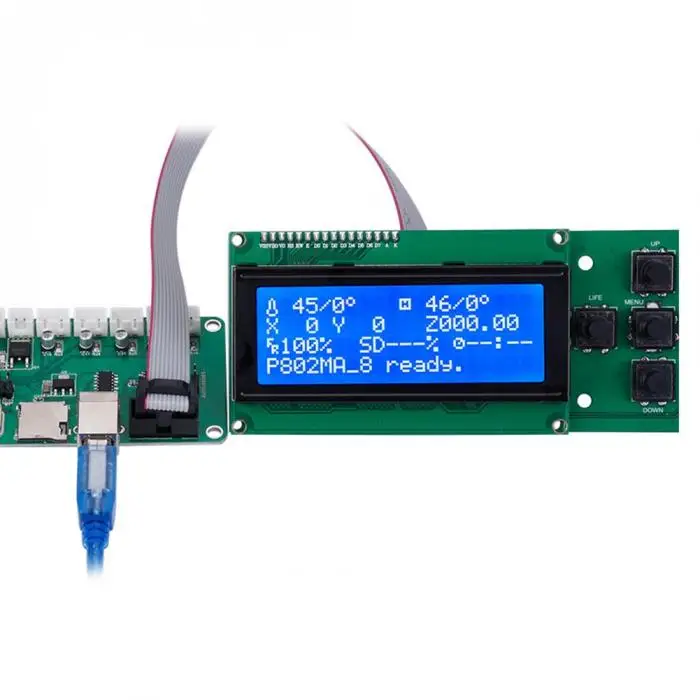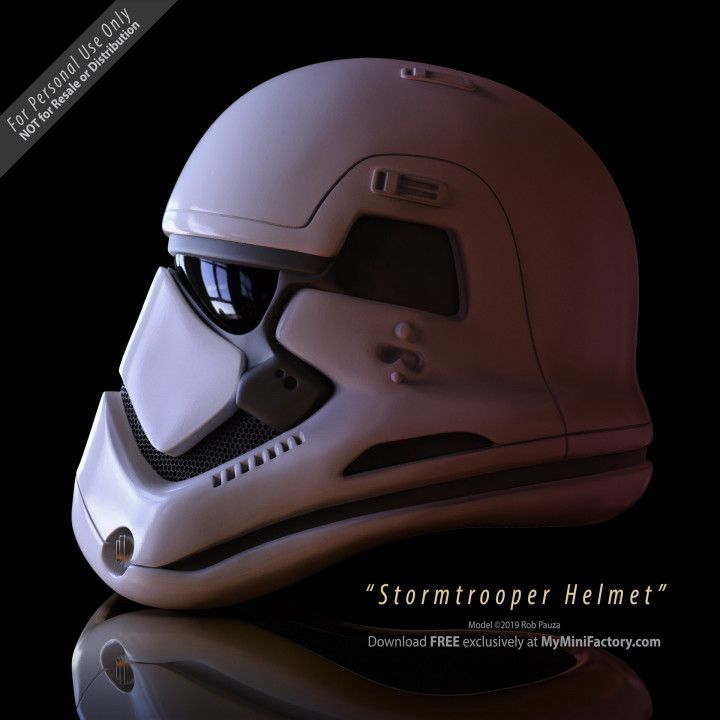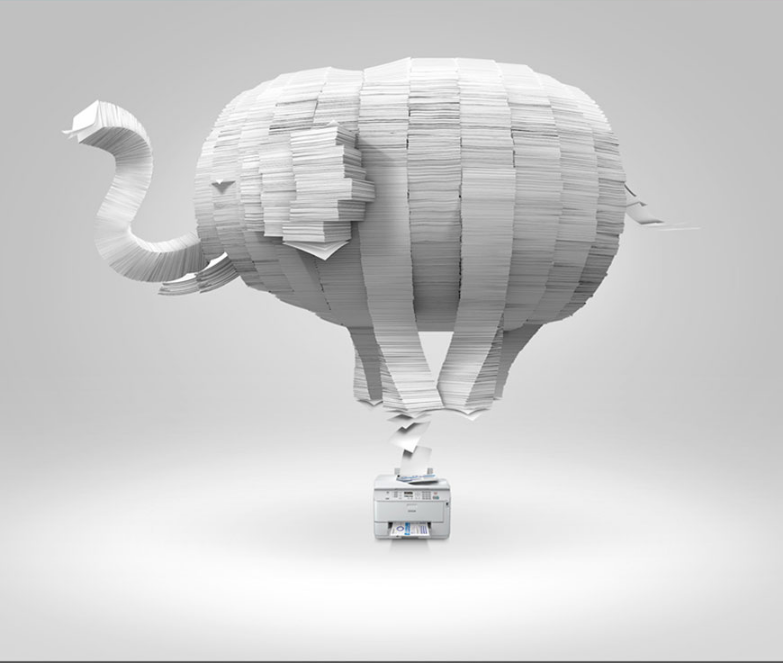Watch 3d printer in action
Starfleet Innotech to 3D print real estate in the Philippines with Luyten technology
0Shares
Global asset management company Starfleet Innotech (SFIO) has unveiled plans to deploy construction start-up Luyten’s 3D printing technology to build a portfolio of affordable homes in the Philippines.
As part of a newly-agreed partnership between the firms, SFIO is set to utilize Luyten’s systems and materials to aid a number of real estate projects it’s carrying out alongside tourism brand Moraya. Through the initiative, SFIO anticipates being able to erect up to 500 low-cost housing units across the Philippines over the next two years, as well as “augmenting its current township developments.”
“Joining Moraya’s divisional ecosystem, Luyten will play a key role as an enabler for our various real estate initiatives,” said Starfleet Innotech CEO Jeths Lacson. “Their affordable, sustainable offerings will allow us to build exciting projects that champion both the new communities we hope to build, as well as the existing communities we hope to serve. ”
Luyten’s Platypus 3D printer in-action. Photo via Jarett Gross, Automate Construction.“Our partnership with Luyten stems from our commitment to invest in the futures of the industries we operate in.”
Luyten in construction 3D printing
Established in 2020 with the stated aim of “bridging the technological gap” between construction and manufacturing, Luyten specializes in the development of concrete 3D printers. At present, the firm’s offering includes two systems: the Platypus and Platypus Expeditionary, with a third, the Platypus X12, said to be in the works.
Each of these modular machines may feature a similar gantry-style format, but their capabilities vary across the range, allowing them to meet the needs of different users. While the entry-level Platypus is designed to serve as an accessible way of validating architectural concepts, the Expeditionary edition offers greater on-site flexibility, enabling users to scale their build as and when they desire.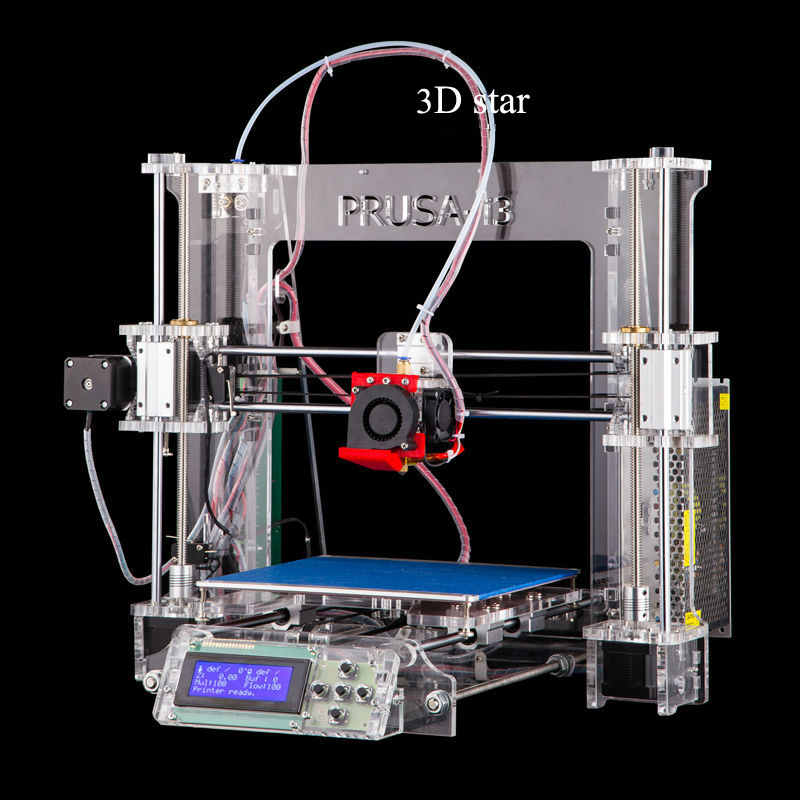
Thus far, Luyten has largely sought to deploy its systems in homebuilding applications, recently using the latter to construct ‘the first AS/NZS 1170 code-compliant house in Australia and the Southern Hemisphere.’ In complying with this ruleset, the building, which took around three days to construct, is said to feature a robust design that allows it to withstand strong ‘wind actions’ during usage.
Late last year, the firm also revealed that it was working as part of Project Meeka to expedite the R&D of a new ‘Platypus Galacticas’ lunar regolith 3D printer. Set to be capable of creating infrastructure up to 9m x 12m in size, the system is ultimately being designed to aid Australia’s ambitions of establishing a permanent presence on the Moon.
Making plans for low-cost housing
Although the nature and location of the builds SFIO has planned for its low-cost housing community remain unclear, the firm itself maintains that by using Luyten’s technology within their construction, it will be able to complete them up to 70% more quickly, while producing 60% less waste than if they were to be erected via traditional technologies.
Citing the ability of Luyten’s gantry machines to build two-bedroom homes inside of two days, SFIO says that they could enable it to achieve greater automation within many of its real estate projects. Using the systems’ remote control functionality, for instance, the firm anticipates being able to operate them with fewer human inputs, thus allowing it to achieve “more cost-effective construction periods.”
In exchange for using Luyten’s technologies to build these affordable housing units, the SFIO has also agreed to act as its main reseller in the Philippines. In fact, as part of the firms’ agreement, SFIO will become the exclusive distributor of Luyten machinery in the country moving forwards, and it now projects selling ‘at least fifty units’ to developers and organizations there over the next 12 months.
While the company concedes that any future sales will be subject to regulatory approval, it does expect to see demand from both government units and nonprofits seeking an affordable means of building quality, resilient homes in the country.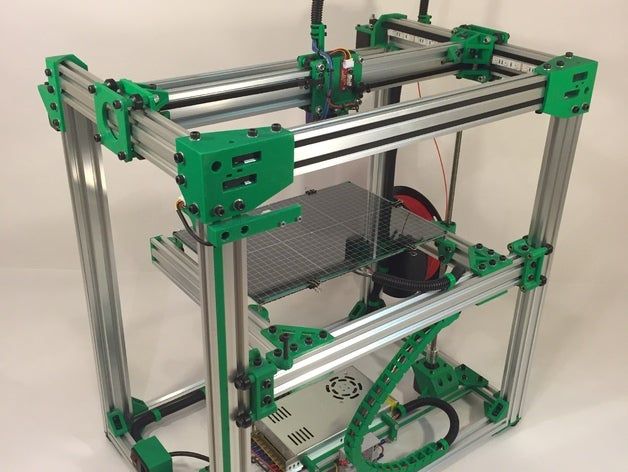
What’s more, even though SFIO only values the construction 3D printing sector at $19 million, it believes this could rise to $5 billion by 2030, thus its deal with Luyten offers it a means of entering what it believes is an area with rapid-growth potential.
ICON’s Vulcan 3D printing technology being used to build a commercial home as part of the East 17th Street project. Image via ICON.Investor interest in construction AM
Concrete 3D printing may not have made significant inroads into the construction sector just yet, but its potential to do so has managed to attract a serious amount of investment. One of the early market leaders in this respect is ICON, which has so far raised $461 million in funding towards the development of its proprietary Vulcan 3D printing technology.
Californian construction start-up Mighty Buildings has also been backed with over $100 million by investors to fund the R&D of its extrusion-based construction 3D printing approach. Upon closing its most recent $22 million funding round, the company committed to using the extra capital to accelerate its carbon neutrality roadmap, and expand its strategic supply chain partnerships.
Upon closing its most recent $22 million funding round, the company committed to using the extra capital to accelerate its carbon neutrality roadmap, and expand its strategic supply chain partnerships.
As recently as March 2022, Diamond Age was able to take advantage of this flurry of investor activity as well, by closing a $50 million Series A funding round. Through combining 3D printing and robotic automation, the firm is aiming to develop a means of more than halving the amount of manual labor required to build a new home, while reducing lead times from nine months to just 30 days.
To stay up to date with the latest 3D printing news, don’t forget to subscribe to the 3D Printing Industry newsletter or follow us on Twitter or liking our page on Facebook.
For a deeper dive into additive manufacturing, you can now subscribe to our Youtube channel, featuring discussion, debriefs, and shots of 3D printing in-action.
Are you looking for a job in the additive manufacturing industry? Visit 3D Printing Jobs for a selection of roles in the industry.
Featured image shows Luyten’s Platypus 3D printer in-action. Photo via Jarett Gross, Automate Construction.
Tags Diamond Age icon Jeths Lacson Luyten Mighty Buildings Moraya Platypus Starfleet Innotech
Paul Hanaphy
Paul is a history and journalism graduate with a passion for finding the latest scoop in technology news.
4 Big Breakthroughs in 3D Printing
Additive manufacturing, or 3D printing as it’s more commonly known, is a technology that has been around for a while. In fact, according to pwc.com, the technology “has existed in some form since the 1980s.” Watch Marlin Steel's 3D printer in action below!
However, it wasn’t until fairly recently that 3D printing has begun to really catch on in the manufacturing industry. Even now, the primary use of 3D printing is to rapidly prototype parts or experiment with designs, as a 3D printer can easily make complicated shapes without the need for specialte tooling or setup.
Why? Well, there are several reasons, such as low manufacturing speed and limitations on useable materials in the process.
However, there are several new big breakthroughs in 3D printing that may just change it from a small, niche assembly method into the primary tool for many manufacturing companies. What are these breakthroughs, and how will they affect 3D printing?
Here’s a short list of some of the bigger breakthroughs in 3D printing technology:
More Efficient Assembly TechnologyEarly 3D printers had a major limitation in that to assemble anything, inkjet printer heads had to be used to sequentially deposit material onto a powder bed. This meant that if you were assembling an object in a printer that was 2’ wide by 3’ high, and your printer’s assembly chamber was 3’ wide and 3’ long, you would have to use up 36 cubic feet of powder bed material per part assembled (3’ x 3’ x 4’ = 36’).
Since then, newer technologies such as extrusion and sintering have been introduced which largely eliminate the need for a solid bed of powder material.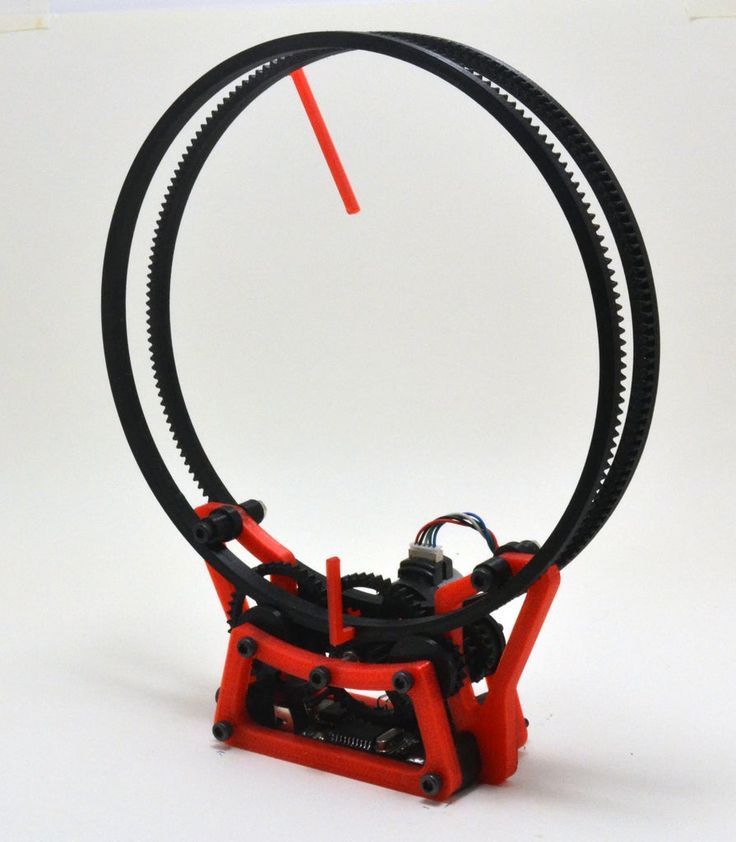
These techniques for adding material made additive manufacturing more cost effective, improving its viability as a manufacturing technique.
Multiple Extrusion Head PrintingAnother major limitation of extrusion-style 3D printing was that there was only one extrusion head to deposit material, which imposed certain limitations on the printing process.
For example, with one extrusion head, you were limited to using a single type of material in the printing process. Another limitation was that certain shapes would be impossible to make using a single extrusion head, as they would have you trying to “print” the edge of a shape onto open air.
The creation of dual-extrusion head printing technology helped to enable the creation of much more complicated parts and shapes.
For example, one extrusion head could be loaded with a “filler” material that could be dissolved with a simple solvent. This gives you something to lay the edge of a shape on so that printing of highly complicated parts can be completed.
Or, you could load two different kinds of polymer into the extrusion heads with different hardness and elasticity values, enabling you to create more complex parts to meet your needs.
Expansion of Usable Materials for PrintingFor a long time, the materials that a 3D-printed object could be made out of were quite limited. In recent years, however, that has changed.
While the extrusion process still largely deals with polymer materials, the list of printable polymers has expanded greatly. The introduction of sintering, on the other hand, has expanded the list of printable materials to include certain metals as well.
However, one of the more exciting developments for 3D printing might be for medical manufacturers: the ability to create artificial organs from synthetically-crafted biological material.
As pointed out in a technologyreview.com article, there are researchers out there that are creating new “inks” that can give 3D printers the ability to print with a wider assortment of materials, “from living cells to semiconductors, mixing and matching the ‘inks’ with precision?”
In the article, the authors state that “Jennifer Lewis, a materials scientist at Harvard University, is developing the chemistry and machines to make that possible.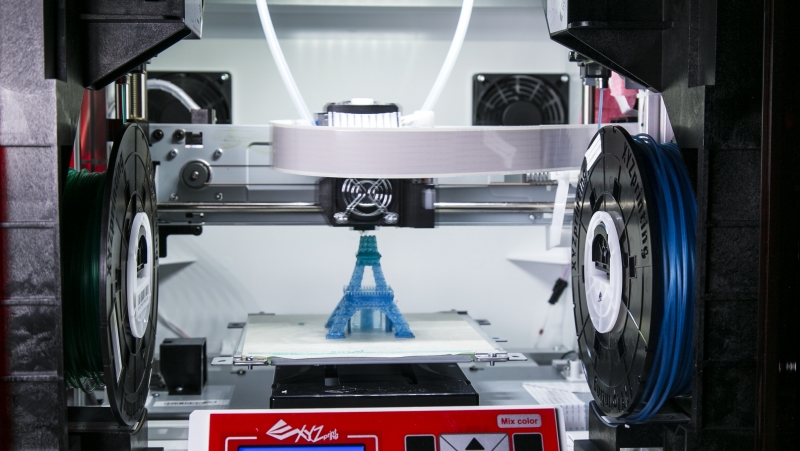 ” This technology could massively expand the market for 3D printing, and potentially save lives in the process.
” This technology could massively expand the market for 3D printing, and potentially save lives in the process.
Here’s a major innovation that was highlighted in a pwc.com article on the subject of 3D printing.
Most 3D printers use the older Cartesian architecture for printing. What is the Cartesian architecture? According to pwc.com, Cartesian printers “move a printhead in two dimensions on a plane.” Basically, these systems are limited to printing one layer at a time on the X and Y axes.
However, there’s a new printer configuration that might just overtake the popular Cartesian architecture: Deltabot printers.
These printers use a series of parallelograms in their printing arms similar to a robot. As pointed out in the pwc.com article, “the Delta printers are going to basically take over all the Cartesian printers, because the have some significant benefits, one of which is speed.” The use of more fluid, complicated arm motions enhance the flexibility of the printing machine greatly, and enable vertical printing over simple layer-by-layer printing.
What else does the future of 3D printing hold? Who knows?
The only thing that is certain is that, as time goes on and more resources are put into researching and improving this technology, it will become more capable and efficient, making it an ever-more-attractive option for manufacturers in many different industries.
Comparison of 3D printing technologies: FDM, SLA and SLS
Additive manufacturing or 3D printing reduces costs, saves time and expands the technological possibilities in product development. 3D printing technologies offer versatile solutions for applications ranging from rapid concept and functional prototypes in the field of prototyping to fixtures and clamps or even final parts in manufacturing.
Over the past few years, high resolution 3D printers have become more affordable, more reliable and easier to use. As a result, more companies have been able to use 3D printing technology, but choosing between different competing 3D printing solutions can be difficult.
Which technology is right for your needs? What materials are available for her? What equipment and training is needed to get started? What are the costs and payback?
In this article, we take a closer look at three of today's most well-known plastic 3D printing technologies: Fused Deposition Modeling (FDM), Stereolithography (SLA), and Selective Laser Sintering (SLS).
Choosing between FDM and SLA 3D printer? Check out our detailed comparison of FDM and SLA technologies.
Download this high resolution infographic here.
VIDEO MANUAL
Can't find the 3D printing technology that best suits your needs? In this video tutorial, we compare Fused Deposition Modeling (FDM), Stereolithography (SLA), and Selective Laser Sintering (SLS) technologies in terms of the top factors to consider when purchasing.
Watch Video
Fused Deposition Modeling (FDM), also known as Fused Filament Manufacturing (FFF), is the most widely used form of 3D printing at the consumer level, fueled by the rise of consumer 3D printers.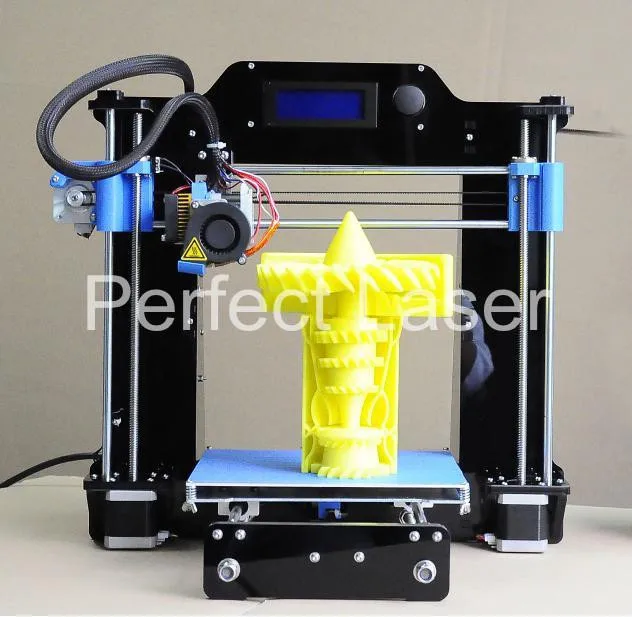 On FDM printers, models are made by melting and extruding a thermoplastic filament, which the printer's nozzle applies layer by layer to the model being built.
On FDM printers, models are made by melting and extruding a thermoplastic filament, which the printer's nozzle applies layer by layer to the model being built.
The FDM method uses a range of standard plastics such as ABS, PLA and their various blends. It is well suited for making basic experimental models, as well as for quickly and inexpensively prototyping simple parts, such as parts that are usually machined.
FDM models often show layer lines and may have inaccuracies around complex features. This sample was printed on a Stratasys uPrint FDM industrial 3D printer with soluble support structures (printer price starting at $15,900).
FDM printers have the lowest resolution and accuracy of SLA or SLS and are not the best option for printing complex designs or parts with complex features. Surface quality can be improved by chemical and mechanical polishing processes. To address these issues, industrial FDM 3D printers use soluble support structures and offer a wider range of engineering thermoplastics, but they are also expensive.
FDM printers do not handle complex designs or parts with complex features well (left) compared to SLA printers (right).
Invented in the 1980s, stereolithography is the world's first 3D printing technology and is still one of the most popular technologies among professionals today. SLA printers use a process called photopolymerization, which is the conversion of liquid polymers into hardened plastic using a laser.
See stereolithography in action.
Models printed on SLA printers have the highest resolution and accuracy, the sharpest detail and the smoothest surface of all plastic 3D printing technologies, but the main advantage of the SLA method is its versatility. Materials manufacturers have developed innovative formulas for SLA polymers with a wide range of optical, mechanical and thermal properties that match those of standard, engineering and industrial thermoplastics.
Models created using SLA technology have sharp edges, a smooth surface and almost invisible layer lines.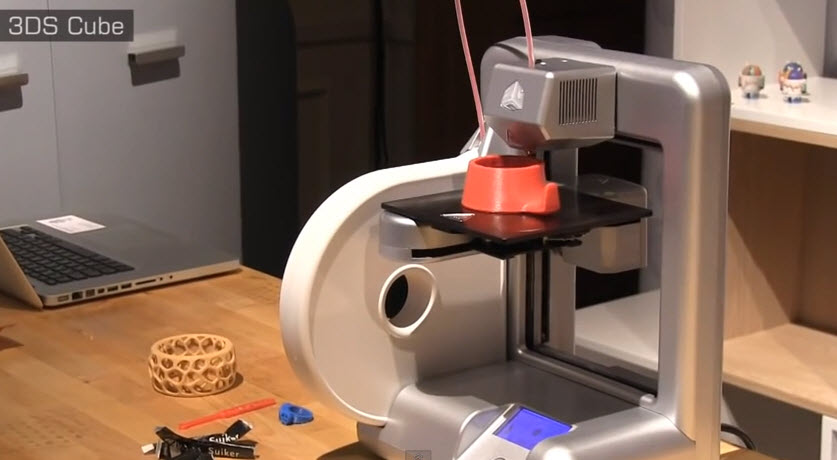 This sample was printed on a Formlabs Form 3 Desktop Stereolithographic 3D Printer (price starting at $3499).
This sample was printed on a Formlabs Form 3 Desktop Stereolithographic 3D Printer (price starting at $3499).
SLA is an excellent option for making highly detailed prototypes that require tight tolerances and smooth surfaces such as molds, templates and functional parts. SLA technology is widely used in industries ranging from engineering and design to manufacturing, dentistry, jewelry, modeling, and education.
White Paper
Download our in-depth white paper to learn how SLA printing works, why thousands of professionals use it today, and how this 3D printing technology can be useful in your work.
Download white paper
free sample
Experience Formlabs print quality firsthand. We will send a free 3D printing sample directly to your office.
Request a free sample
Selective laser sintering is the most common additive manufacturing technology used in industry.
Selective Laser Sintering (SLS) 3D printers use a high power laser to sinter fine polymer powder particles. The unsprayed powder supports the model during printing and eliminates the need for special support structures. This makes SLS ideal for complex geometries, including internal features, grooves, thin walls, and negative taper. Models produced using SLS printing have excellent mechanical characteristics: their strength can be compared with the strength of injection molded parts.
Models created with SLS technology have a slightly rough surface, but almost no visible layer lines. This sample was printed on the Formlabs Fuse 1 SLS workshop 3D printer (price starting at $18,500).
The most common selective laser sintering material is nylon, a popular engineering thermoplastic with excellent mechanical properties. Nylon is light, strong and flexible, resistant to impact, heat, chemicals, UV radiation, water and dirt.
The combination of low part cost, high productivity, and widely used materials makes SLS a popular method for engineering functional prototyping and a cost-effective alternative to injection molding in cases where production runs are limited.
White Paper
Looking for a 3D printer to create durable, functional models? Download our white paper to learn how selective laser sintering (SLS) technology works and why it is popular in 3D printing for functional prototypes and end-use products.
Download white paper
Each 3D printing technology has its strengths, weaknesses, limitations and applications. The following table summarizes the key characteristics and factors.
| Modeling method (FDM) | Stereolithography (SLA) | Selective laser sintering (SLS) | |
|---|---|---|---|
| ★★★★☆ | |||
| accuracy | ★cle ★cle \ ★★★★★ | ||
| Easy to use | ★★★★★ | ★★★★★ | ★★★★★★★★★★★★★0104 |
| Benefits | Speed Inexpensive custom machines and materials | High cost efficiency High accuracy Smooth surface Wide range of functional applications | Robust functional parts Design flexibility No need for supporting structures |
| Disadvantages | Poor accuracy low detail Limited Compliance with Design Design | Susceptibility to prolonged UV exposure | Uneven surface Material Limitations |
| Applications | Inexpensive Rapid Prototyping Basic experimental models | Functional prototyping Templates, forms and tools Dental products Prototyping jewelry and molds Model building | Functional prototyping Small-scale and custom-made |
| Print volume | Up to ~300 x 300 x 600 mm (desktop 3D printers) | Up to ~300 x 335 x 200 mm (Desktop and Workshop 3D printers) | Up to 165 x 165 x 300 mm (Workshop 3D printers) |
| Materials | ABS plastic, PLA and their various mixtures. | Various polymers (thermosets). Standard, engineering (with properties of ABS plastic, polypropylene, flexible, heat-resistant), molding, dental and medical (biocompatible). | Engineering thermoplastics. Nylon 11, Nylon 12 and their composites. |
| Training | Minimum training in equipment setup, machine operation and surface treatment; short maintenance training. | Plug and play concept. Minimal training in equipment setup, maintenance, machine operation and surface treatment. | Short training in equipment setup, maintenance, machine operation and surface treatment. |
| Room requirements | Air-conditioned environment or preferably individual ventilation for desktop machines. | Desktop machines suitable for office use. | Workshop systems have moderate space requirements and can be installed in a production environment. |
| Accessories | Support removal system for machines with soluble support structures (optionally automated), finishing tools. | Finishing station, washing station (optionally automated), finishing tools. | Post-processing station for cleaning models and restoring materials. |
Either way, you should choose the technology that best suits your business. Prices have dropped significantly in recent years, and today all three technologies are offered in compact and affordable systems.
3D printing costing doesn't end with initial equipment costs. Material and labor costs have a significant impact on the cost of each part, depending on the application and production needs.
Below is a detailed breakdown by technology.
| Modeling method (FDM) | Stereolithography (SLA) | Selective laser sintering (SLS) | Equipment costs and sets for 3D-dimensions for 3Ds and sets several hundred dollars. Offering higher quality, mid-range desktop printers start at $2,000, while industrial systems start at $15,000. | Professional desktop printers start at $3,500, large-format workshop printers start at $10,000, industrial systems for large-scale production start at $80,000. |
|---|---|---|---|
| Material cost | $50-$150/kg for most standard and engineering yarns and $100-$200/kg for auxiliary materials. | $50-$150/L for most standard and engineering polymers. | $100/kg for nylon. SLS does not require supporting structures and unused powder can be reused, reducing material costs. |
| Labor | Manual removal of support structures (may be automated for industrial systems with dissolvable supports). Long post-processing is required to obtain a high quality surface. | Washing and final polymerization (both can be automated). Simple post-processing to remove supporting structures. | Easy cleaning to remove excess powder. |
INTERACTIVE MATERIAL
Try our interactive ROI tool to see how much time and money you can save by printing with Formlabs 3D printers.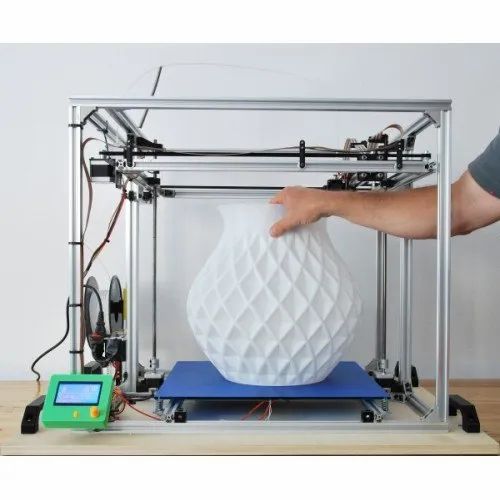
Calculate savings
FDM, SLA and SLS printed prototype ski goggle frames (left to right).
We hope this article has helped you narrow down your search for the 3D printing technology best suited to your needs.
Take advantage of our additional resources to learn the ins and outs of 3D printing, learn more about each technology and learn more about specific 3D printing systems.
Learn more about 3D printing technologies
Investment idea: 3D Systems, because 3D printing
Mikhail Gorodilov
makes money on investments
Author profile
Today we have a very speculative idea to take 3D printer shares Systems (NYSE: DDD) to capitalize on the expected growth in demand in this area.
Growth potential and duration: 20.5% for 14 months; 54% over 4 years; 11% per year for 15 years.
Why stocks might rise: 3D printing has a great future.
How we act: we take shares now at $32.34.
When creating the material, sources were used that are inaccessible to users from the Russian Federation. We hope you know what to do.
Our thoughts are based on an analysis of the company's business and the personal experience of our investors, but remember: it is not a fact that an investment idea will work as we expect. Everything we write is forecasts and hypotheses, not a call to action. Rely on our thoughts or not - it's up to you.
And what about the author's forecasts
Research, such as this and this, suggests that the accuracy of target price predictions is low. And this is normal: there are always too many surprises on the stock exchange and accurate forecasts are rarely realized. If the situation were reversed, then funds based on computer algorithms would show results better than people, but alas, they work worse.
Therefore, we do not try to build complex models. The profit forecast in the article is the author's expectations. We indicate this forecast for reference: as with the investment idea as a whole, readers decide for themselves whether to trust the author and focus on the forecast or not.
The profit forecast in the article is the author's expectations. We indicate this forecast for reference: as with the investment idea as a whole, readers decide for themselves whether to trust the author and focus on the forecast or not.
We love, appreciate,
Investment edition
How the company earns
DDD makes 3D printers and provides services in this area. You can see what the company's printers look like on its website, but for the most part, these are printers for the corporate sector.
According to the annual report, the company's revenue is divided into the following segments.
Goods - 61.2%. A variety of printers: for plastic, for metal, for ceramics, and so on. Specialized software for scanning, design and virtual simulations for the medical sector. The segment's gross margin is 31.6% of its revenue.
Services - 38.8%. Technical support and training services for the company's clients. Production services for the company's customers - from prototyping to more complex projects. Specialized services for the medical sector: surgical planning, printing devices and instruments, building anatomical models, and more. The segment's gross margin is 52.7% of its revenue.
Specialized services for the medical sector: surgical planning, printing devices and instruments, building anatomical models, and more. The segment's gross margin is 52.7% of its revenue.
The report lacks detail: it would be useful to know what types of printers the company has - ceramic or metal, how much revenue they generate, and what is the structure of revenue by customer type. We know that the company serves clients from almost every possible industry: everyone always needs to print something large.
Company revenue by country and region:
- The Americas - 50.25%. The US accounts for 49.47% of the company's total revenue.
- Europe, Middle East and Africa - 38.34%.
- Asia Pacific - 11.41%.
The company is unprofitable.
Revenue and profit for the last 12 months in billions of dollars, total margin as a percentage of revenue. Source: MacrotrendsArguments in favor of the company
Dropped.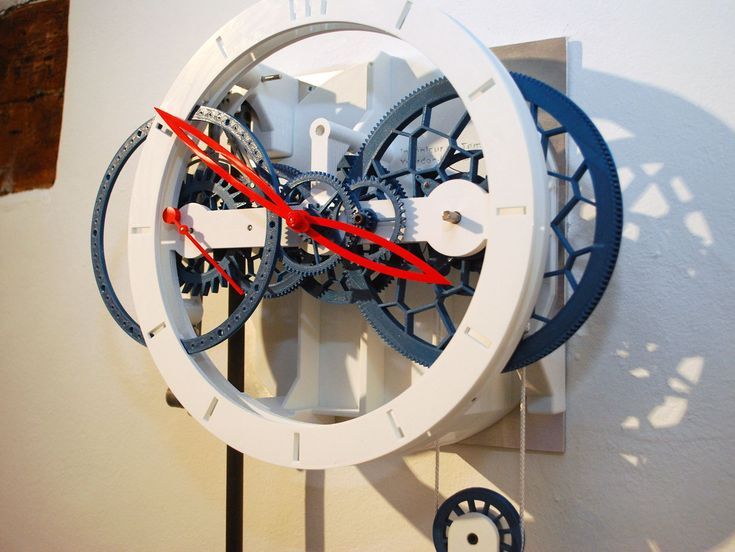 The company's shares have fallen in price by 41.57% since February of this year: from $55.35 to $32.34. The fall was quite strong and perhaps we can pick up stocks in anticipation of a rebound.
The company's shares have fallen in price by 41.57% since February of this year: from $55.35 to $32.34. The fall was quite strong and perhaps we can pick up stocks in anticipation of a rebound.
Something about a fast growing market. DDD's target market for 3D printing and related solutions and products is expected to increase from $15 billion in 2021 to $37.2 billion in 2026. More recently, DDD bought Volumetric Biotechnologies, a biomaterial printing company, perhaps from this, those who believe that soon the missing organs for transplantation can be mass-produced on printers will run into the DDD shares.
The company has not the largest capitalization - 4.05 billion dollars. It is possible that its shares will be easy to pump for retail investors because they read somewhere that "the sector is very promising."
Prose of the market. In general, the company has something to hope for without speculation. In the Proto Labs idea, we have already discussed the good prospects for companies related to R&D and small-scale production due to the expected increase in corporate sector investment around the world in the renewal of fixed assets. And 3D printing is needed primarily for creating prototypes and a small number of parts.
And 3D printing is needed primarily for creating prototypes and a small number of parts.
DDD could also benefit from Biden's infrastructure package, which is about to become a reality. This will stimulate the industry and contribute to the demand for DDD solutions: it will increase the wear and tear of the equipment of manufacturing companies and increase their need to invest in the business.
Life has become better. In the latest report, DDD showed progress: the unprofitability of its business is declining - and profit may not be far off. This can attract investors from among banks and funds into shares.
Can buy. DDD has 35 years of additive manufacturing experience with solutions for all industries, from dentistry and surgery to jewelry and high-tech manufacturing. Given all of the above, it may well be bought by some large industrial conglomerate.
What can get in the way
Expensive. The company has a P/S of about 6.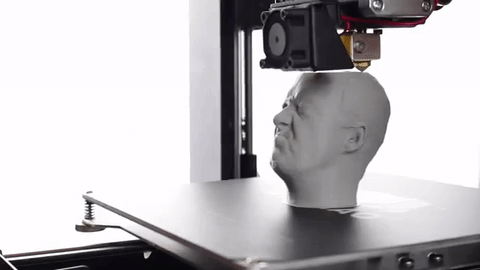 55 - which is not very low. And if we take into account the unprofitability of the company and the fact that its revenue has not been growing particularly actively in recent years, you can even decide that the company is expensive.
55 - which is not very low. And if we take into account the unprofitability of the company and the fact that its revenue has not been growing particularly actively in recent years, you can even decide that the company is expensive.
Unprofitable. The company has been on the market for a long time, but it has no profit. Loss will contribute to the volatility of these stocks. Yes, and there is always the possibility of bankruptcy, even taking into account the fact that DDD's accounting is quite accurate: it has enough money to close all urgent debts.
Not all at once. Waves of investor interest in the field of 3D printing periodically give way to disappointment when it suddenly turns out that not every individual user can print their own house yet.
3D printing technology is still quite raw and needs significant improvement: there are problems with a large number of defects, temperature control. So DDD will remain in the position of such a risky startup for some time to come, the technology of which has not yet been fully mastered. This must be understood and accepted in order not to be surprised by the volatility of these stocks.
This must be understood and accepted in order not to be surprised by the volatility of these stocks.
Hot time sets its test. The company has production and assets around the world, and more than half of its sales are made outside the United States. This means that logistical problems, as well as an increase in the cost of labor and raw materials, will be reflected in its reporting. Well, the permanent threat of a new quarantine must also be taken into account: as the experience of 2020 showed, the DDD business does not respond well to a decrease in industrial activity in the world.
What is the result
Shares can be taken now at $32.34. And then there are three options:
- wait until shares are worth $39. I think we will reach this level in the next 14 months;
- wait until the stock is worth $50. Here, you may have to wait 4 years for 3D printing to become widespread;
- hold shares for 15 years to see the company become IBM from the world of 3D printing.

Learn more



